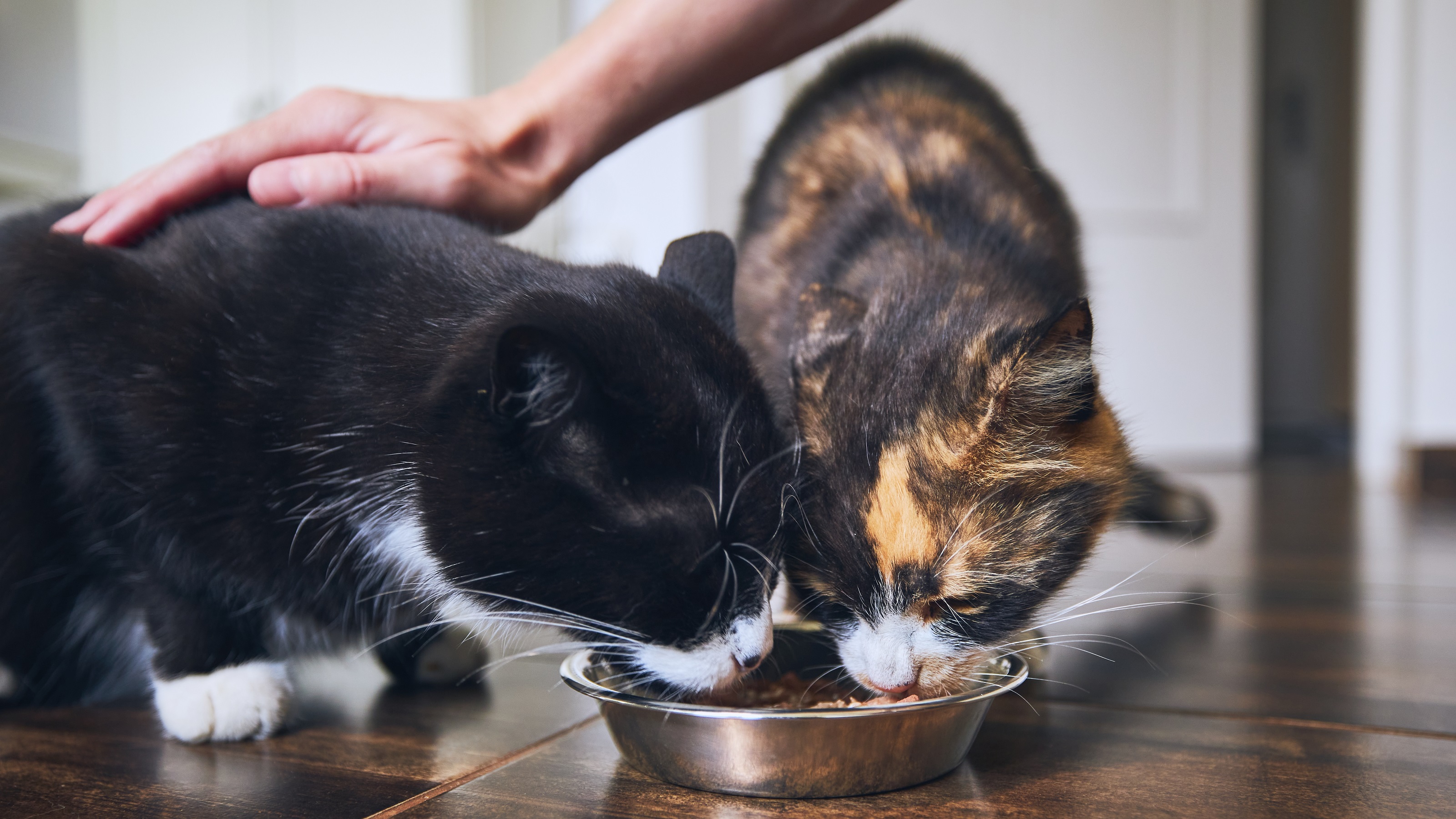The Bare Necessities of Buying Pet Insurance
Pet insurance can help put you at ease over the health of your furry friends. Here's what to look for when shopping around for a policy.


We have two cats in our family: Macy (age 8) and Winni (age 2). Fortunately, they have both been healthy so far. But they’re reaching an age where problems may start happening. Injuries can occur, and urinary tract, kidney and dental issues are all possible.
Medical care for pets can be expensive. I’ve heard stories from fellow cat owners who’ve paid $3,000 or more for a cystotomy to remove bladder stones or $5,000 or more for surgery following an injury.
I love our kitties and I’ll do anything to help them live to a ripe old age. That’s why, for the first time, we’re buying pet insurance. Hopefully, we won’t need to use it for a while, but if we ever need to, we’ll be very glad it’s there.
From just $107.88 $24.99 for Kiplinger Personal Finance
Become a smarter, better informed investor. Subscribe from just $107.88 $24.99, plus get up to 4 Special Issues

Sign up for Kiplinger’s Free Newsletters
Profit and prosper with the best of expert advice on investing, taxes, retirement, personal finance and more - straight to your e-mail.
Profit and prosper with the best of expert advice - straight to your e-mail.
I’ll share what I’ve learned so far as I’ve gone through this process.
Coverage level
Depending on the age of your pet, and the level of coverage you choose, annual premiums can run from a couple of hundred dollars to $1,000 or more.
Fortunately, in most cases, you have a lot of flexibility in finding a pet insurance “sweet spot.”
Most insurers let you choose the annual level of medical coverage you want. If you have a kitten (or a puppy), you might want to start low — maybe $2,000 to $3,000 — since most younger pets stay pretty healthy unless they get injured or eat something they shouldn’t.
As I was researching options, I found that one insurance company on my shortlist wouldn’t insure Macy because she’s too old. Luckily, we found another company that doesn’t discriminate against older cats.
As they age, you might want to gradually increase this coverage. For our cats, I’m capping coverage for $5,000 each.
Of course, like any kind of insurance, higher coverage means higher premiums. These will go up every year even if you don’t change your coverage.
Deductibles
Like most human health insurance plans, pet insurance has annual deductibles for co-pays and treatments. You pay this amount out of pocket before the coverage kicks in. Naturally, higher deductibles mean lower premiums, and vice versa.
For our two cats, we settled on $1,000 deductibles for each.
What's covered?
Most pet health insurance policies cover medically required treatments, including operations, ongoing treatments, and pre- and post-procedure consultations once the deductibles are met.
Some may also cover prescription costs and physical therapy. Some policies also cover the costs of euthanasia, cremation and burial.
However, it’s important to read the fine print of any policy before you sign on the bottom line. There may be certain procedures or treatments your policy won’t pay for.
Also, most insurers may not issue a policy if your pet has a known pre-existing medical condition.
Getting a quote
Most pet health insurers make it relatively easy to get a preliminary quote online. You just fill out an online form answering questions about your pet, including its age, weight, breed and medical history.
A company might offer several different packages, ranging from lower-cost options with minimal coverage to more expensive policies that cover more routine costs.
Once you decide to formally apply, you might be asked to provide the contact information for your vet or to provide documentation of previous routine physicals or treatments your pet has received.
After the insurer reviews the information, the premium cost may not be the same as the one you were initially quoted. It’s up to you whether you want to sign up or not. It’s always good to do comparison shopping, but make sure you’re comparing apples to apples. Pawlicy.com lets you compare side-by-side quotes from different insurers for the kinds of coverage you want.
Optional riders
Most basic pet health insurance policies only cover the costs of medical procedures and treatments. They usually don’t cover the costs of routine physical exams, diagnostic blood work or X-rays, preventative prescriptions, vaccinations or dental procedures, including cleanings.
However, some carriers offer supplemental riders that cover a portion of these routine expenses. Sometimes they’re bundled in packages, so you can’t pick and choose which ones you want. So, it’s best to choose a package based on routine care costs you know are on the horizon for your pet.
We decided to forgo any optional riders for our cats.
How companies pay
Most pet insurance policies require a waiting period between the date you officially enroll and the date coverage actually begins.
In most cases, you pay for your vet’s costs out of pocket and then submit receipts to the insurer. They’ll send you a check for the amount they’re covering.
However, some pet insurance companies allow the vet to submit their bills directly. The company reimburses the vet for the covered costs, and the vet bills you for the uncovered amount. Check with the insurer to find out what their policy is.
Paying for your policy
Most insurers allow you to pay an annual policy in installments. You can usually pay by check, electronic fund transfers from your bank, or with a credit card.
Renewing your policy
Your policy renews every year, and the premiums nearly always rise because of the increased health risks as your pets age.
Fortunately, you can generally change your coverage amount, deductions and riders or move from a less expensive package to a more costly package, or vice versa.
Keep in mind, however, that if you lower the coverage level to reduce premium costs, the insurer may not allow you to increase it the following year. Make sure you understand the change policies before you modify your policy.
Should you get pet health insurance?
After doing our research, including reading hundreds of consumer reviews of many different pet insurance companies, we finally chose an insurer we felt we could trust and signed up for a policy that meets our needs.
In the end, the combined monthly costs of our two policies, each with a $5,000 coverage cap and a $1,000 deductible, will be $39 a month. That price includes a multipet discount of $5 per month.
Whether you need pet insurance or not depends on how much you’re willing to pay for unanticipated pet medical costs out of pocket. If your pets are relatively young and never leave your home, they may have a lower risk of getting sick or injured.
Once they start reaching middle age, their chances of needing expensive medical care start to increase. You might want to research the kinds of ailments dogs and cats often suffer as they age (and the costs of treatments) and use that information to determine if pet health insurance makes sense.
Related Content
- Thinking of Getting a Pet? What Costs to Expect
- Pet Ownership: What It Really Costs to Own a Dog or Cat
- How to Save Money on Pet Costs
- Healthcare Cost Basics: What They Are and Ways to Save
- Medicare Checklist: Avoid Costly Enrollment Mistakes
Profit and prosper with the best of Kiplinger's advice on investing, taxes, retirement, personal finance and much more. Delivered daily. Enter your email in the box and click Sign Me Up.

Joelle Spear, CFP® is a financial adviser and a partner at Canby Financial Advisors in Framingham, Mass. She has an MBA with a finance concentration from Bentley University.
Securities and advisory services offered through Commonwealth Financial Network®, Member FINRA/SIPC, a Registered Investment Adviser.
-
 I'm want to give my 3 grandkids $5K each for Christmas.
I'm want to give my 3 grandkids $5K each for Christmas.You're comfortably retired and want to give your grandkids a big Christmas check, but their parents are worried they might spend it all. We ask the pros for help.
-
 If You're Not Doing Roth Conversions, You Need to Read This
If You're Not Doing Roth Conversions, You Need to Read ThisRoth conversions and other Roth strategies can be complex, but don't dismiss these tax planning tools outright. They could really work for you and your heirs.
-
 Could Traditional Retirement Expectations Be Killing Us?
Could Traditional Retirement Expectations Be Killing Us?A retirement psychologist makes the case: A fulfilling retirement begins with a blueprint for living, rather than simply the accumulation of a large nest egg.
-
 I'm a Financial Planner: If You're Not Doing Roth Conversions, You Need to Read This
I'm a Financial Planner: If You're Not Doing Roth Conversions, You Need to Read ThisRoth conversions and other Roth strategies can be complex, but don't dismiss these tax planning tools outright. They could really work for you and your heirs.
-
 Could Traditional Retirement Expectations Be Killing Us? A Retirement Psychologist Makes the Case
Could Traditional Retirement Expectations Be Killing Us? A Retirement Psychologist Makes the CaseA retirement psychologist makes the case: A fulfilling retirement begins with a blueprint for living, rather than simply the accumulation of a large nest egg.
-
 I'm a Financial Adviser: This Is How You Can Adapt to Social Security Uncertainty
I'm a Financial Adviser: This Is How You Can Adapt to Social Security UncertaintyRather than letting the unknowns make you anxious, focus on building a flexible income strategy that can adapt to possible future Social Security changes.
-
 My Teen Crashed His Car and Now Our Insurance Has Tripled. What Now?
My Teen Crashed His Car and Now Our Insurance Has Tripled. What Now?Dealing with the costly aftermath of a teen car accident is stressful. Here are your options for navigating it.
-
 My First $1 Million: Retired In-House Corporate Lawyer, 74, Midwest
My First $1 Million: Retired In-House Corporate Lawyer, 74, MidwestEver wonder how someone who's made a million dollars or more did it? Kiplinger's My First $1 Million series uncovers the answers.
-
 I'm a Financial Planner for Millionaires: Here's How to Give Your Kids Cash Gifts Without Triggering IRS Paperwork
I'm a Financial Planner for Millionaires: Here's How to Give Your Kids Cash Gifts Without Triggering IRS PaperworkMost people can gift large sums without paying tax or filing a return, especially by structuring gifts across two tax years or splitting gifts with a spouse.
-
 'Boomer Candy' Investments Might Seem Sweet, But They Can Have a Sour Aftertaste
'Boomer Candy' Investments Might Seem Sweet, But They Can Have a Sour AftertasteProducts such as index annuities, structured notes and buffered ETFs might seem appealing, but sometimes they can rob you of flexibility and trap your capital.
-
 AI Stocks Lead Nasdaq's 398-Point Nosedive: Stock Market Today
AI Stocks Lead Nasdaq's 398-Point Nosedive: Stock Market TodayThe major stock market indexes do not yet reflect the bullish tendencies of sector rotation and broadening participation.